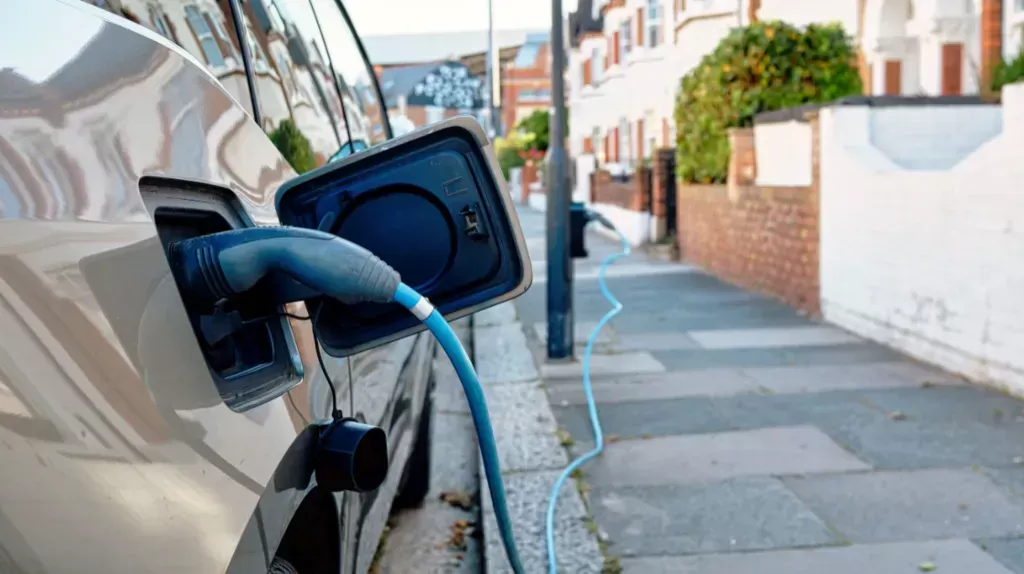Notifications

6 minutes, 50 seconds
-70 Views 0 Comments 0 Likes 0 Reviews

The Complete Guide to Home EV Charging: Convenience, Speed, and the Future
Introduction
As a professional EV chargers manufacturer in China, Topper Company provides dependable electric vehicle charging equipment and comprehensive charging solutions.
As electric vehicles (EVs) become increasingly popular, one of the most important aspects of ownership is knowing how to charge your car efficiently and safely at home. While public charging stations are growing in number, charging at home offers unbeatable convenience, cost savings, and better long-term care for your EV’s battery. In this article, we’ll explore how home EV charging works, why installing a home charger is worth it, and what new technologies are on the horizon.
Why Install a Home Charging Station?
For most EV owners, the motivation to install a home charging station boils down to two things: speed and convenience.
Yes, you can plug your EV into a regular 120-volt outlet (called Level 1 charging), but it's a slow process. Level 1 chargers typically add just 3–5 miles of range per hour—fine for emergencies, but not practical for everyday use.
A Level 2 home charger, on the other hand, uses a 240-volt connection and can deliver 20–60 miles of range per hour. This means you can fully charge your EV overnight and hit the road every morning without worry.
There's also a long-term benefit: home charging is gentler on your EV's battery compared to public DC fast chargers, which generate more heat and can degrade battery life over time. Plus, charging at home means no more trips to public stations or waiting in line—just plug in when you get home.
Top Benefits of a Home EV Charger
Installing a Level 2 charger at home comes with a host of advantages. Here’s why it’s a smart investment:
Level 2 chargers are significantly quicker than standard outlets because they draw more power directly from your home’s electrical system.
A 7.4 kW charger typically adds about 25 miles of range per hour.
A more powerful 11.5 kW charger can add up to 40 miles per hour.
This makes Level 2 charging ideal for daily commuters or anyone who wants to avoid frequent public charging stops.
Charging an EV pulls a lot of electricity, and using the wrong setup can put stress on your home’s electrical system. Home EV chargers are built to handle this safely, featuring:
Ground fault protection
Overcurrent protection
Temperature monitoring
A professional installation ensures your system is properly wired and reduces the risk of overloading or electrical fires.
With a home charger, you can top up your battery anytime—overnight, during off-peak hours, or even just while relaxing at home.
Many home chargers also come with smart features, like smartphone control, remote monitoring, and scheduling. That means you can charge when electricity is cheapest, saving you even more money.
Exploring the Future: Vehicle-to-Load and Vehicle-to-Grid
EVs are evolving beyond transportation. Two emerging technologies—Vehicle-to-Load (V2L) and Vehicle-to-Grid (V2G)—are turning cars into mobile power hubs.
V2L allows your EV to power external devices, turning your car into a giant battery on wheels. From camping trips to power outages, V2L can run everything from a mini-fridge to a home office setup. Many new EVs from Kia, Hyundai, and others already support this feature.
V2G goes a step further by allowing your EV to feed electricity back into the grid. During peak demand, your car could help balance the grid—and you could get paid for it. Although still in development, V2G has the potential to make EVs essential parts of a more resilient, sustainable energy system.
Can I Upgrade My Home for Faster Charging?
Yes—and in many cases, it’s easier than you might think.
Most Level 2 chargers require a 240-volt outlet, similar to what large appliances use. If your home already has this, installation can be straightforward. Older homes may need an electrical panel upgrade, new circuits, or a service capacity increase.
A licensed electrician can assess your current setup and recommend what’s needed. Installation costs can range from a few hundred dollars for simple installs to a few thousand for major upgrades—but the long-term convenience and savings often outweigh the upfront investment.
Conclusion
Charging your EV at home changes the entire ownership experience. It’s faster, safer, more convenient, and better for your battery's health. With the rise of smart charging, V2L, and V2G technologies, EVs are becoming more than just a mode of transport—they’re integral parts of a smarter, greener energy future.
Whether you’re new to EVs or ready to upgrade your home setup, understanding home charging is key to unlocking the full benefits of electric driving.Know more about Google SEO Directory
China EV Chargers EV Charger Manufacturer EV Charging Solutions

